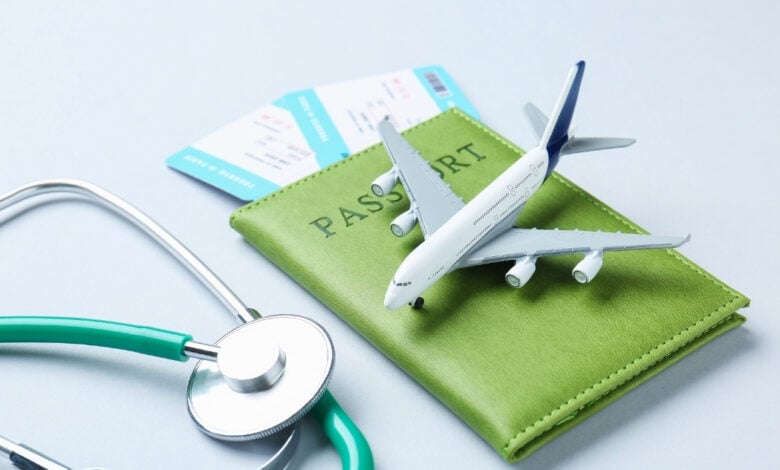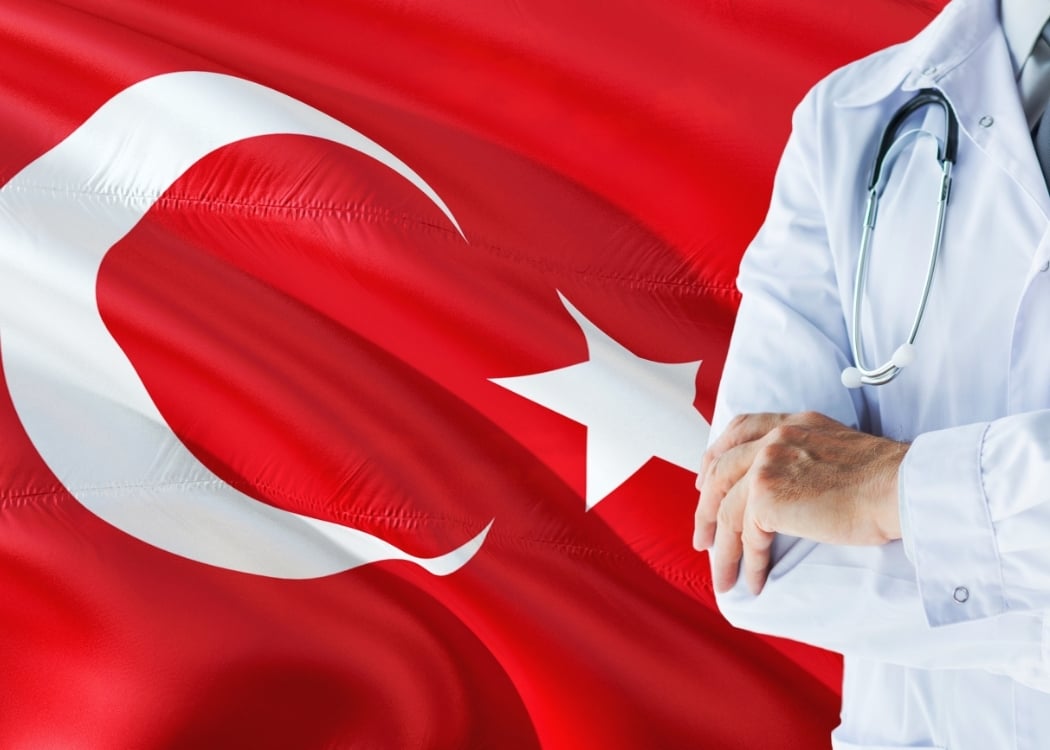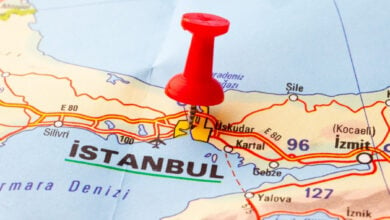Medical Tourism Stats
Istanbul is the heart of Turkey’s medical travel, where high-volume hospitals and international patient teams meet easy global access. With one of the world’s busiest airports and many accredited centers, patients can plan care, travel, and follow up smoothly. Here is the Medical Tourism Stats of Turkey, especially of Istanbul.

Istanbul sits at the heart of medical travel in Turkey. The country welcomed about 1.5 million international health visitors in 2024, generating just over $3.0 billion in health tourism revenue. In the second quarter of 2025 alone, Turkey recorded 733,798 health visitors and $1.39 billion in revenue, showing strong ongoing demand. These are official figures reported by USHAŞ, the state agency for international health services. Let’s have a look at the medical tourism stats.
The global picture in 2024–2025
Market researchers estimate the global medical tourism market at roughly $31 billion in 2024, with rapid growth ahead. Some forecasts see the market reaching $87 billion by 2030 or more as travel normalizes and clinics expand services.
Industry analysts who focus on spending per traveler put the 2023 market at $63–88 billion, based on ~21–22 million cross-border patients who spend about $3,510 per trip on medical and travel costs. Both views can be true—the difference comes from methods, not a mistake.

Why people travel for care
- Lower prices: many procedures abroad cost 40–80% less than in the U.S. (varies by country and procedure).
- Faster access: people avoid long wait lists at home for diagnostics or surgery.
- Specialized clinics: some destinations are known for hair transplants, dental implants, cosmetic surgery, bariatrics, or IVF.
- Combining care and travel: many patients bundle checkups or dental work with pre-planned trips.
What Treatments People Travel For
The most common categories include dental and cosmetic procedures, plus bariatric, orthopedic, fertility, and ophthalmology. Patterns change by region, but these six areas dominate most reports.
Quick examples
- Dental care (implants, veneers, full-mouth rehab) draws large cross-border flows because prices differ widely and results are immediate.
- Cosmetic surgery (rhinoplasty, liposuction, breast procedures) is often bundled with hotel and transport by clinics in major hubs.
- Bariatric surgery demand is rising internationally; cost is a key driver. (Safety note below.)
- Hair transplantation has clear destination leaders; see Türkiye/Istanbul below.

How Big Is Medical Tourism in Türkiye (and Istanbul)?
Türkiye is now one of the busiest medical travel markets. Official announcements and industry tallies point to ~1.5 million international health tourists in 2024, generating about $3 billion in revenue. Early 2025 updates showed strong momentum, with hundreds of thousands of patients in Q1 alone.
Istanbul concentrates a big share of this activity as the country’s largest city and aviation hub, with private hospital groups, specialty centers, and international patient offices. Many facilities in Türkiye hold JCI accreditation (you can look up any hospital’s current status directly on JCI’s site).
What people come to Türkiye for
- Hair transplants: Türkiye is widely recognized as a global leader, with package pricing and high procedure volumes.
- Dental and cosmetic care: crowns, implants, smile designs, and aesthetic surgery are common reasons to fly in.
- Bariatric surgery and eye surgery: strong interest due to price and access, though long-term follow-up must be planned (see safety).
How much do travelers spend?
Globally, the average spend per medical trip, including clinical fees, local lodging, and transport, is often cited around $3,510. Actual costs vary with the procedure and destination. In Türkiye, media and ministry briefings for 2024 imply average receipts in the low-thousands of dollars per patient, consistent with that global average.
Safety, Quality & How to Read the Numbers
Accreditation and outcomes
A reliable way to compare clinics across borders is international accreditation. JCI reports that 1,000+ organizations in 70+ countries have earned its Gold Seal; you can search current accreditations by country and provider name. Accreditation does not guarantee an outcome, but it is a useful quality signal.
Why statistics vary so much
There is no single global registry for “medical tourists.” Many travelers enter on standard tourist visas; countries define medical and health tourism differently, and some systems don’t track outcomes or visit reasons in a comparable way. That’s why market-size estimates can differ. Treat stats as directional, not absolute.

Important safety notes
- Plan follow-up. Some destinations market low prices but offer limited aftercare—especially risky after bariatric or complex surgery. UK experts have called for stronger regulation due to preventable complications.
- Know privacy rules. Health data protections vary by country; in some places, record-keeping and privacy safeguards are not uniform.
- Verify credentials. Use official accreditation searches (e.g., JCI) and ask for surgeon experience, complication rates, and emergency plans.
Fast Facts (2024–2025)
- Global market size: about $31 billion (2024), with forecasts to $87 billion by 2030—definitions vary by report.
- Cross-border patients (2023): ~21–22 million; average spend ~$3,510 per trip.
- Typical savings vs. U.S. prices: 40–80% depending on destination and procedure.
- Türkiye (2024): roughly 1.5 million health tourists, about $3 billion in revenue; continued growth in early 2025.
- Istanbul: the country’s main hub for international patients; many hospitals are internationally accredited (check status on JCI’s directory).
- Popular procedures worldwide: dental, cosmetic, bariatric, orthopedic, IVF, and ophthalmology.
- Hair transplants: Türkiye is a leading destination by volume and price transparency.

How to Use These Stats in Real Life
If you’re comparing destinations, use numbers as a starting point and then verify quality. Check accreditation. Ask for written quotes that list everything (surgeon fees, anesthesia, meds, lab tests, implants, hospital nights, transfers). Confirm how aftercare works once you’re home—who handles stitches, scans, or complications, and how fast can your team respond. A clear plan matters more than any headline number.
References
- Grand View Research. Medical Tourism Market Size & Share (2024–2030).
- Fortune Business Insights. Medical Tourism Market Size & Global Trends (2024–2032).
- Patients Beyond Borders (Media page). 2023 global spend and patient estimates; average spend per trip; treatment mix notes.
- ASMBS (American Society for Metabolic and Bariatric Surgery). Medical Tourism—typical 40–80% cost differences.
- Joint Commission International. Find JCI-accredited organizations; program overview (1,000+ organizations in 70+ countries).
- Hürriyet Daily News. Health care sector increases share in tourism revenues (June 13, 2025) — USHAŞ quarterly figures for 2025.
- USHAŞ / Ministry & press coverage summarizing 2024: ~1.5 million health tourists; ~$3 billion revenue (multiple briefings, 2024–2025).
- Vox. How did Turkey become the world capital of hair transplants? (2025).
- The Guardian. Weight-loss surgery tourism needs urgent regulation, say UK experts (2025).
- CDC Yellow Book (2025). Medical Tourism—data and record-keeping differences across destinations.
- Market overviews of common procedures in medical travel (dentistry, cosmetic, cardiac, bariatric, IVF, ophthalmology).
Note: Figures vary by source because definitions and tracking methods differ. Where possible, we cite official and primary sources and show ranges.



